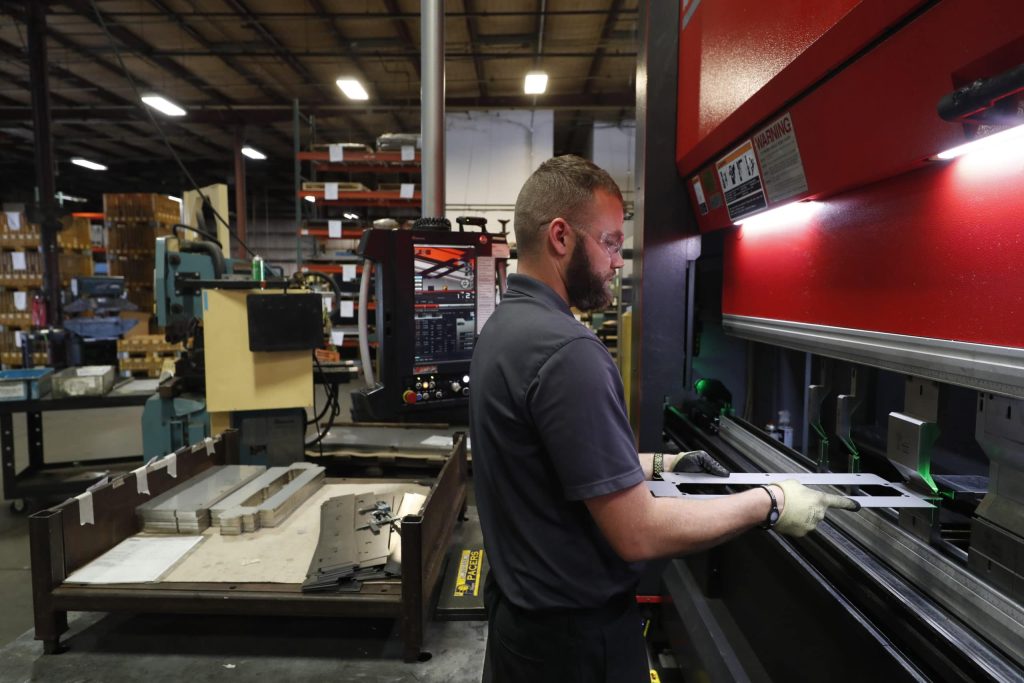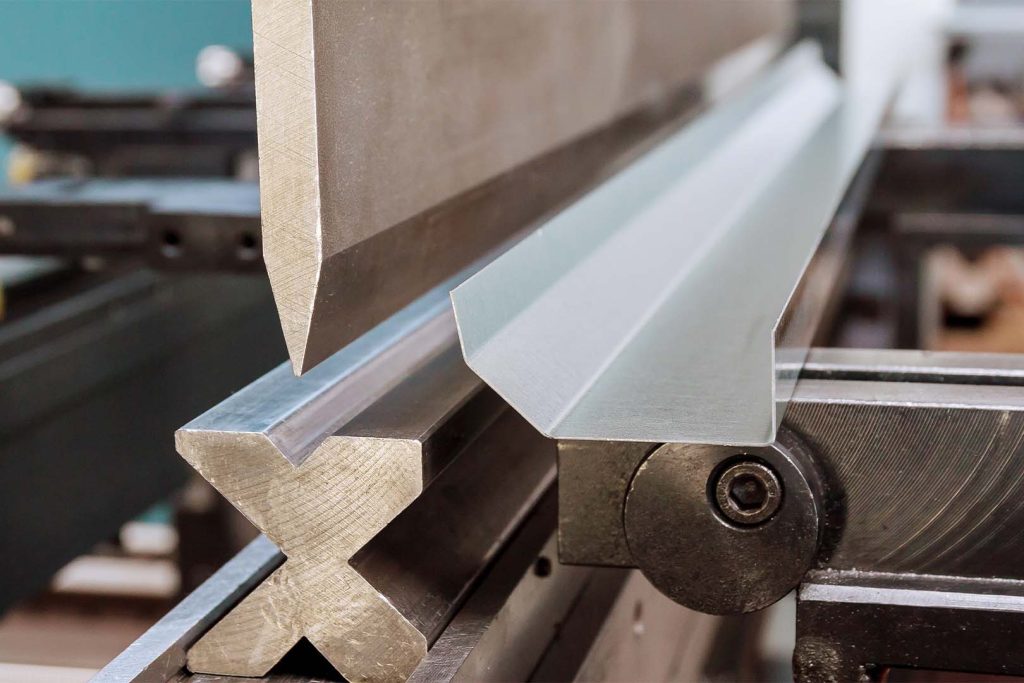Table of Contents
If you’re looking to improve your automotive skills, learning how to fabricate a sheet metal plenum is a great place to start. Plenums are an essential part of any engine’s air intake system, controlling the distribution of air and fuel to the cylinders. By building your own plenum, you can create a custom solution that perfectly fits your engine’s needs, and adds a touch of personal flair to your project.
In this guide, we’ll cover everything you need to know to fabricate a sheet metal plenum, from selecting the right materials to shaping and welding the pieces together. Whether you’re a seasoned mechanic or a beginner DIY enthusiast, with the right tools and some patience, you’ll be able to build a plenum that will help your engine run at its best. So let’s dive in and get started!
- Start by measuring the dimensions of the plenum you need to fabricate.
- Using a sheet metal brake, bend the metal to the required angles and shapes.
- Cut the metal to the correct size using metal snips or a saw.
- Mark and punch holes for any necessary connections.
- Use a welder to join the pieces together.
- Finish the plenum by grinding down any rough edges and adding insulation if necessary.
How to Fabricate a Sheet Metal Plenum?
A sheet metal plenum is an essential component of an HVAC system, which is responsible for distributing the air throughout the building. It is made up of a rectangular or square box with a flat top, which connects to the HVAC unit. In this article, we will discuss how to fabricate a sheet metal plenum, which is an essential step in HVAC installation.
Step 1: Measuring and Cutting the Sheet Metal
The first step in fabricating a sheet metal plenum is to measure and cut the sheet metal. You will need a measuring tape, a straight edge, and a pair of tin snips. Measure the length, width, and height of the plenum, and mark the measurements on the sheet metal. Then, use the straight edge to make straight cuts along the marks.
Next, use the tin snips to cut out the four sides of the plenum. Make sure to cut along the lines, and be careful not to cut too much or too little. Once you have cut out the four sides, use the tin snips to cut out the top of the plenum.
Step 2: Folding and Seaming the Sheet Metal
Once you have cut out the sheet metal, the next step is to fold and seam the edges. You will need a sheet metal brake and a sheet metal seamer. First, use the sheet metal brake to make a 90-degree bend along the edges of the sheet metal. This will create the sides of the plenum.
Next, use the sheet metal seamer to create a seam along the edges of the sheet metal. This will help to reinforce the edges and prevent air leakage. Make sure to apply enough pressure to create a tight seal.
Step 3: Installing the Flanges and Ductwork
After folding and seaming the sheet metal, the next step is to install the flanges and ductwork. You will need a drill, screws, and flanges. First, drill holes in the corners of the plenum and attach the flanges using screws.
Next, attach the ductwork to the flanges using screws. Make sure to seal the joints with duct tape or mastic to prevent air leakage. Finally, install the plenum on top of the HVAC unit and secure it in place using screws.
Benefits of Fabricating a Sheet Metal Plenum
There are several benefits to fabricating a sheet metal plenum for your HVAC system. Firstly, it provides a more efficient and effective distribution of air throughout the building. Secondly, it is a durable and long-lasting solution that requires minimal maintenance. Finally, it can be customized to fit the specific requirements of your HVAC system, ensuring optimal performance.
Sheet Metal Plenum vs. Other Materials
Sheet metal plenums are a popular choice for HVAC systems, but there are also other materials available, such as fiberglass or plastic. However, sheet metal plenums offer several advantages over these alternatives. Firstly, they are more durable and long-lasting, with a lifespan of up to 30 years. Secondly, they are less prone to leaks and air loss, ensuring a more efficient and effective distribution of air. Finally, they can be customized to fit the specific requirements of your HVAC system, ensuring optimal performance.
Conclusion
In conclusion, fabricating a sheet metal plenum is an essential step in HVAC installation. By following the steps outlined in this article, you can create a durable and efficient plenum that will provide optimal performance for your HVAC system. Remember to measure and cut the sheet metal carefully, fold and seam the edges tightly, and install the flanges and ductwork securely. With these steps, you can create a sheet metal plenum that will last for many years and provide efficient air distribution throughout your building.
Frequently Asked Questions
Sheet metal plenums are essential components of HVAC systems. If you need to fabricate a sheet metal plenum, you may have some questions about the process. Here are some frequently asked questions and answers about how to fabricate a sheet metal plenum:
What materials do I need to fabricate a sheet metal plenum?
To fabricate a sheet metal plenum, you will need a sheet metal, a shearing machine, a brake press, a spot welder, a TIG welder, a plasma cutter, and a drill press. You will also need a set of measuring tools, including a tape measure, a square, and a protractor. Additionally, you will need safety equipment, such as gloves, safety glasses, and a respirator.
The sheet metal you use should be the same gauge as the rest of your ductwork. You can use galvanized steel, aluminum, or stainless steel, depending on your needs and budget. Make sure to order enough sheet metal to allow for waste and mistakes.
How do I measure and cut the sheet metal for the plenum?
Before you start cutting the sheet metal, you need to measure the plenum’s dimensions carefully. Use a tape measure to measure the height, width, and depth of the plenum. Then, use a square and a protractor to mark the cuts on the sheet metal.
Once you have marked the cuts, use a shearing machine or a plasma cutter to cut the sheet metal to the right size. Make sure to wear safety equipment and follow the manufacturer’s instructions when using the cutting tools.
How do I bend and shape the sheet metal for the plenum?
After you have cut the sheet metal to the right size, you need to bend and shape it to form the plenum’s sides, top, and bottom. To do this, you will need a brake press and a set of bending tools that match the angles you need.
Place the sheet metal on the brake press and use the bending tools to create the desired angles. Make sure to follow the manufacturer’s instructions and wear safety equipment. You may need to make several passes to achieve the correct angles.
How do I join the sheet metal pieces together?
Once you have bent and shaped the sheet metal, you need to join the pieces together to form the plenum. To do this, you can use a spot welder or a TIG welder, depending on the material and your skills.
Before welding, make sure to clean the metal surfaces and remove any dirt, oil, or rust. Then, use the welder to create strong and consistent welds. You may need to practice on some scrap metal before welding the plenum.
How do I install the sheet metal plenum in my HVAC system?
After you have fabricated the plenum, you need to install it in your HVAC system. To do this, you will need to connect the plenum to the ductwork using sheet metal screws, flanges, or gaskets.
Make sure to follow the manufacturer’s instructions and local building codes when installing the plenum. You may need to seal the joints with duct tape or mastic to prevent air leaks. Then, test the system for proper airflow and adjust as needed.
In conclusion, fabricating a sheet metal plenum is not as difficult as it may seem. With the right tools and skills, anyone can create a plenum that is both functional and aesthetically pleasing.
Firstly, it is important to have a clear understanding of the purpose of the plenum and the specifications required for the project. This will help to ensure that the final product is both effective and efficient.
Secondly, proper safety precautions should be taken when working with sheet metal, such as wearing protective gear and using tools correctly. This will reduce the risk of injury and ensure a successful outcome.
Finally, attention to detail is key when fabricating a sheet metal plenum. Taking the time to measure accurately and make precise cuts will result in a final product that fits perfectly and functions as intended.
By following these guidelines, anyone can fabricate a sheet metal plenum with confidence and success.
Request a quote today!
[contact-form-7 id="1578" title="Contact form"]
Please compress the file into a ZIP or RAR file before uploading. Alternatively, send through your RFQ by email.
enquires@unitymanufacture.com




